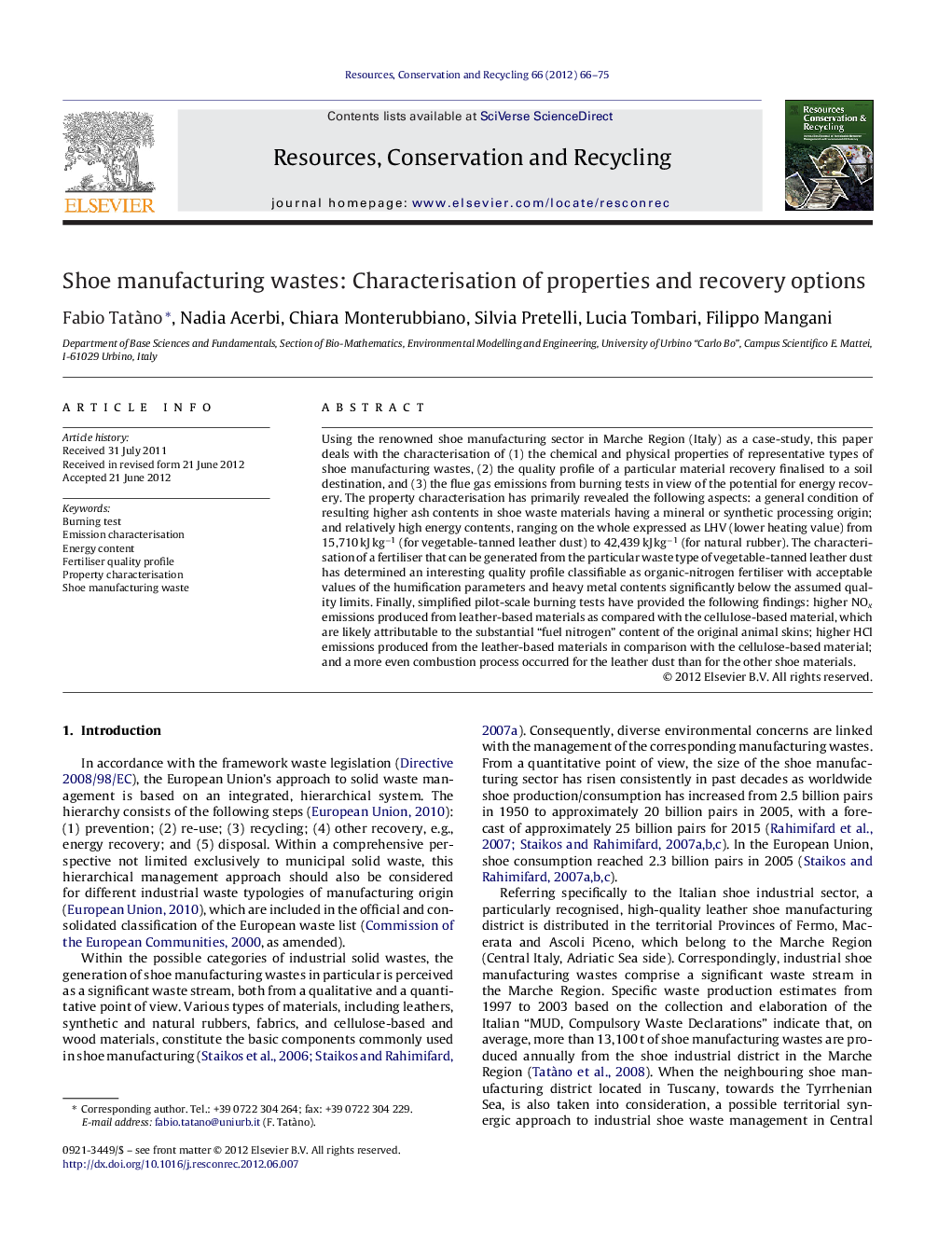| کد مقاله | کد نشریه | سال انتشار | مقاله انگلیسی | نسخه تمام متن |
|---|---|---|---|---|
| 1063270 | 1485723 | 2012 | 10 صفحه PDF | دانلود رایگان |

Using the renowned shoe manufacturing sector in Marche Region (Italy) as a case-study, this paper deals with the characterisation of (1) the chemical and physical properties of representative types of shoe manufacturing wastes, (2) the quality profile of a particular material recovery finalised to a soil destination, and (3) the flue gas emissions from burning tests in view of the potential for energy recovery. The property characterisation has primarily revealed the following aspects: a general condition of resulting higher ash contents in shoe waste materials having a mineral or synthetic processing origin; and relatively high energy contents, ranging on the whole expressed as LHV (lower heating value) from 15,710 kJ kg−1 (for vegetable-tanned leather dust) to 42,439 kJ kg−1 (for natural rubber). The characterisation of a fertiliser that can be generated from the particular waste type of vegetable-tanned leather dust has determined an interesting quality profile classifiable as organic-nitrogen fertiliser with acceptable values of the humification parameters and heavy metal contents significantly below the assumed quality limits. Finally, simplified pilot-scale burning tests have provided the following findings: higher NOx emissions produced from leather-based materials as compared with the cellulose-based material, which are likely attributable to the substantial “fuel nitrogen” content of the original animal skins; higher HCl emissions produced from the leather-based materials in comparison with the cellulose-based material; and a more even combustion process occurred for the leather dust than for the other shoe materials.
► Characterisation of representative shoe material wastes in terms of properties and in view of potential material and energy recovery options.
► High energy contents ranging as LHV from 15,710 (vegetable-tanned leather dust) to 42,439 kJ kg−1 (natural rubber).
► Organic-nitrogen fertiliser generable from the vegetable-tanned leather dust with favourable humification conditions.
► NOx emissions during burning tests of leather-based materials attributable to the substantial fuel nitrogen content of the original animal skins.
► Higher HCl emissions during burning tests of leather-based materials in comparison with the cellulose-based material.
Journal: Resources, Conservation and Recycling - Volume 66, September 2012, Pages 66–75